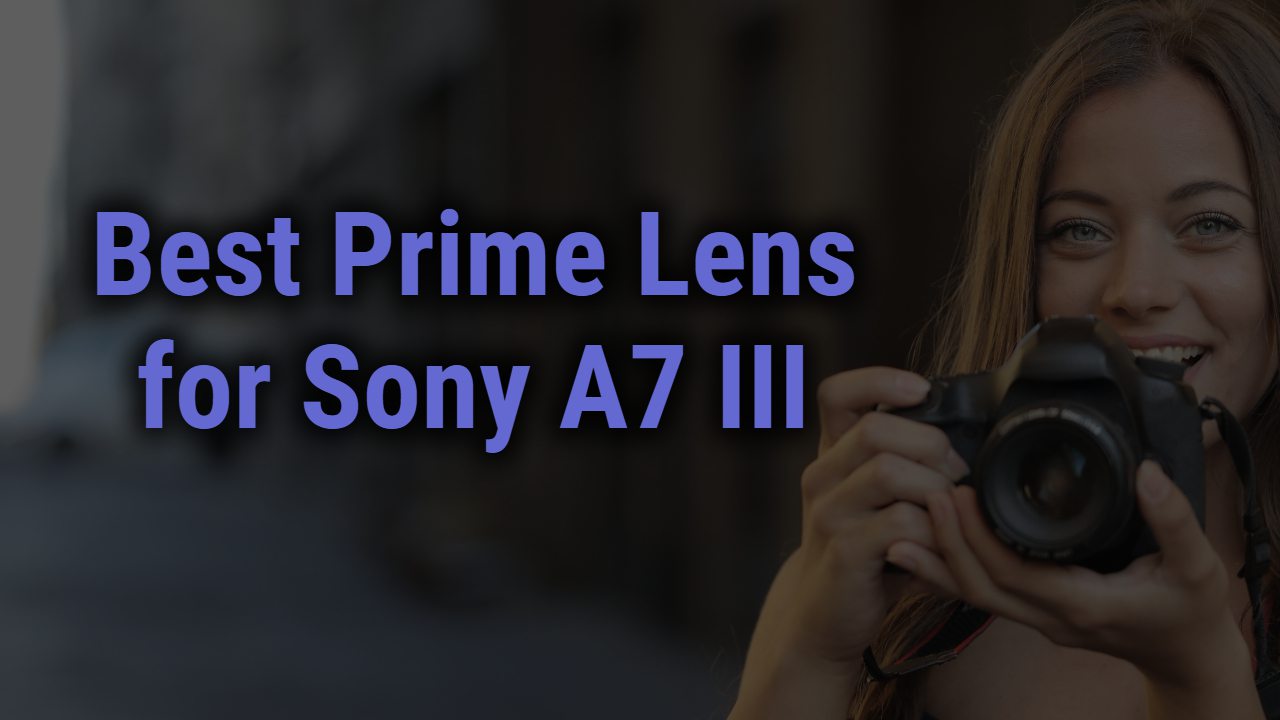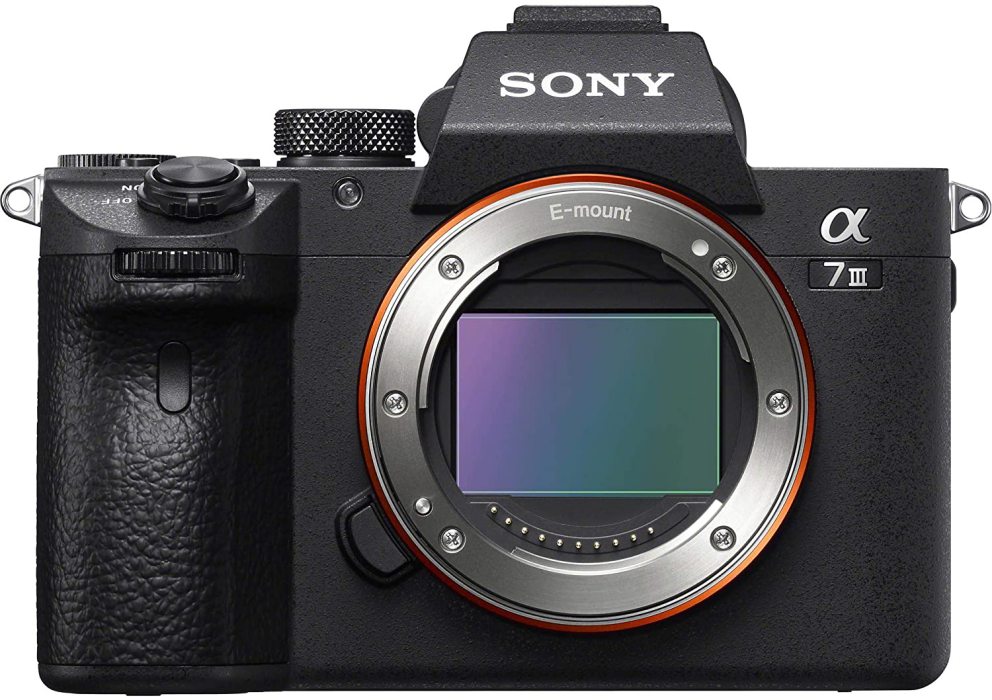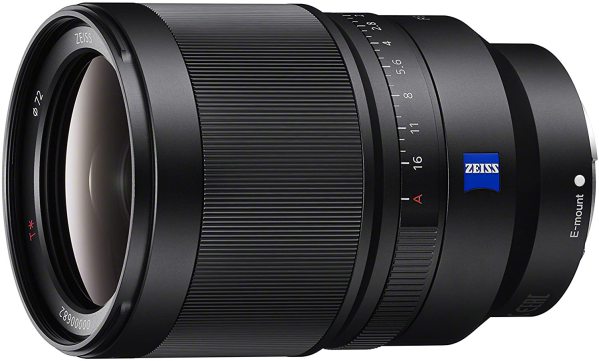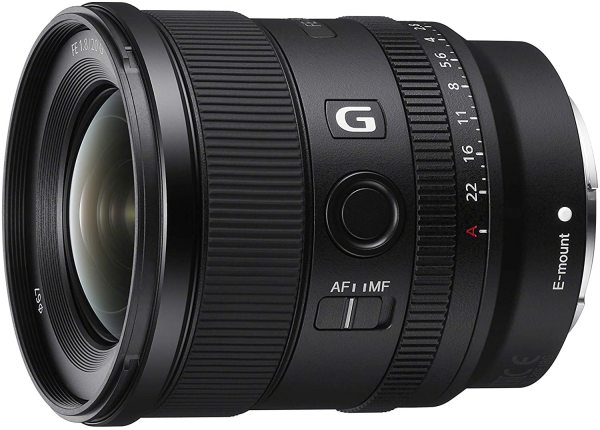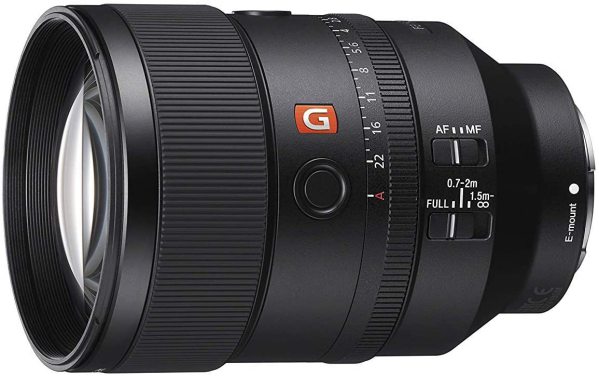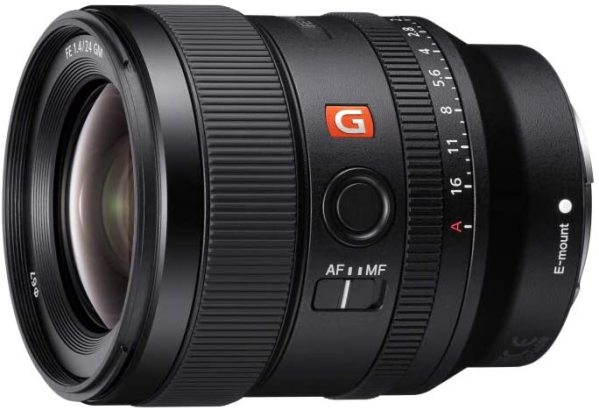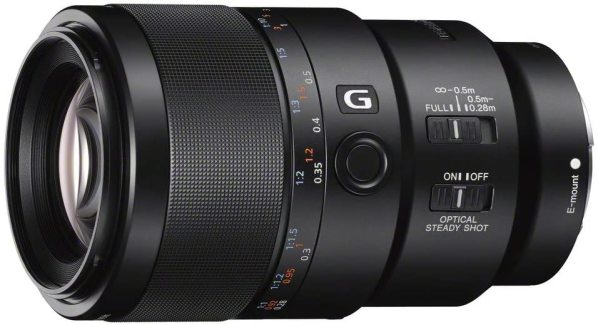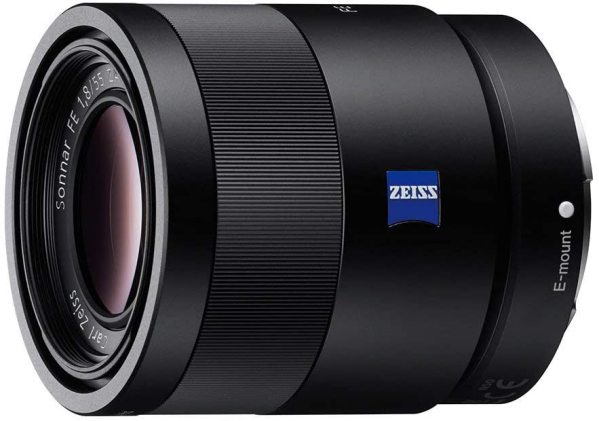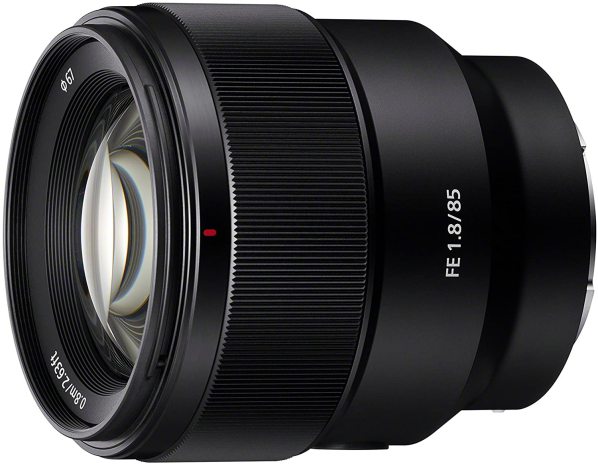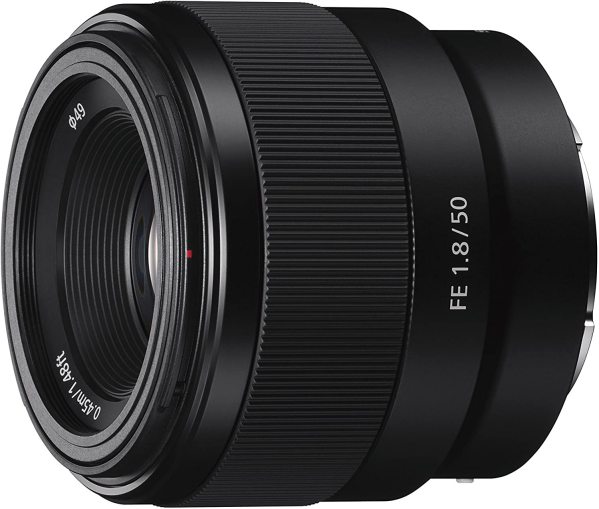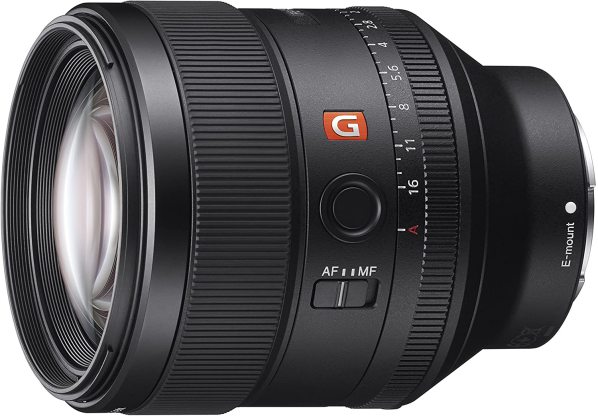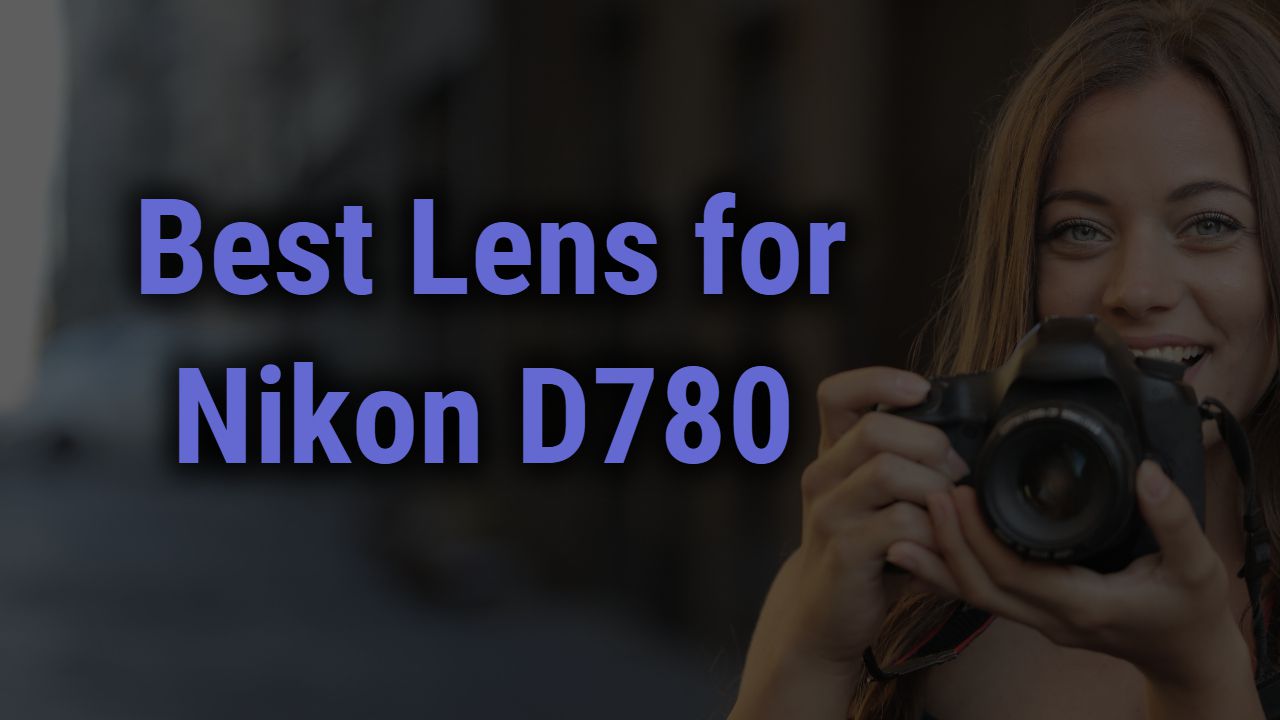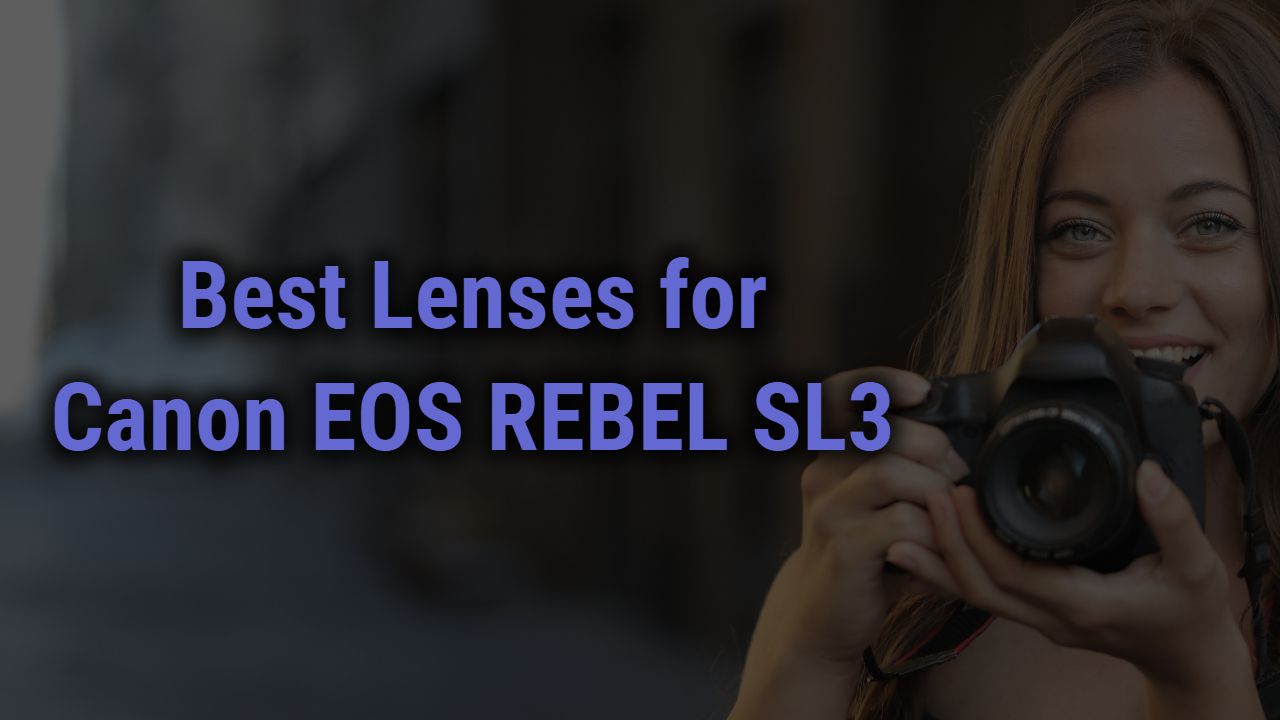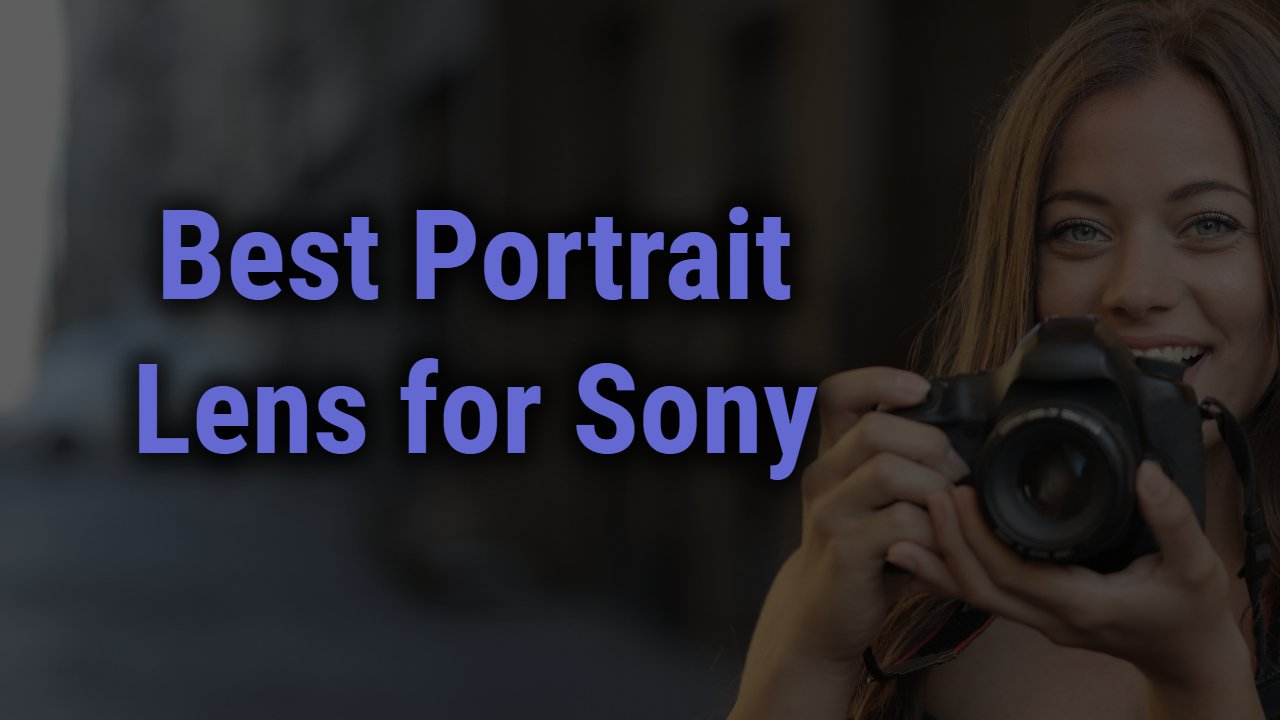Indeed, the Sony group is a marvelous player and a reliable source that has been producing the best cameras for decades now. Sony A7 III is another magnificent example of their competency, an excellent option for quality photography as well as filming. The full-frame 24.2 MP resolution of the camera with updated hybrid AF, improved speed, and low light performance standardly give goals of professional photography.
Professional photography has this major dependency on lens quality and capabilities; it is undeniably true that the sharp optics and abilities of premium lenses will lead you to the jaw-droppingly best result; this only leaves the prime lens category in our mind. Yes, the all-rounder prime lenses offer satisfactory quality and enticing optics for a lower price, but finding the right prime lens specific to Sony A7 III can be a really daunting task.
Sony A7III
Note:
All the lenses mentioned here are tested with Sony A7III and work perfectly fine. Some of the lenses do not have image stabilization but the Sony A7III has built-in 5-axis stabilization so there is no need for stabilization in the lens itself.
| Best Prime Lenses for Sony A7III |
|---|
|
Sony SEL35F14Z (Best All-Around Prime Lens)
|
|
Sony SEL20F18G (Best Wide-angle Prime Lens)
|
|
Sony SEL35F28Z (Best Budget Prime Lens)
|
|
Sony SEL135F18GM (Best Telephoto Lens)
|
|
Sony SEL24F14GM (Best Prime Lens for Video)
|
|
Sony SEL90M28G (Best Macro Lens)
|
|
Sony SEL55F18Z (Best Portrait Prime Lens)
|
|
Sony SEL85F18 (Cheapest Telephoto Lens)
|
|
Sony SEL50F18F/2 (Best 50mm Prime Lens)
|
|
Sony SEL85F14GM
|
Sweat the trouble out now because we are bringing you this information compiled a list of the best prime lenses for Sony A7III enfolded with their significant constant length and astonishing versatility, all within a decent price budget. All of these lenses are E-mount with full-frame sensor coverage under the best prime lens category; you can rely on that. After a steady analysis, we have picked these exemplary models worth every penny, leaving you with only one task in picking the right one.
There are two basic categories of camera lenses: prime (fixed focal length) and zoom (changeable focal length).
Prime lenses are those that have fixed focal lengths, which means they don’t zoom out. However, the quality of a prime lens is typically better than the quality of a zoom lens.
Some cameras even come equipped with a fixed prime lens, which isn’t very versatile, but it is extremely sharp. Typically, you’ll use this type of lens for distant subject photos, such as landscapes and architecture.
Prime lenses are fixed-focal-length lenses that are smaller and lighter than a zoom lens while delivering sharp images at these focal lengths. A prime lens is a non-zoom lens with a fixed focal length (the names “prime” and “fixed” refer to the same thing), typically greater than 35 mm but less than 135 mm.
Lenses of this type are often the most basic and least expensive, but they offer greater optical quality than zoom lenses.
There are many different kinds of camera lenses. The main types of camera lenses are Prime, Zoom, Telephoto, and Wide-angle.
This Post Contains
Best Prime Lenses for Sony A7III
Let us directly head into the different prime lenses available for Sony A7 III that are available for this model, which you can get In online as well as offline market. Most of the lenses listed below in their subcategory/genre give the user optimal use and a better photography experience.
Standard Prime Lens
1. Sony SEL35F14Z FE 35mm f/1.4 ZA Standard-Prime Lens
Sony’s SEL35F14Z 35mm f/1.4 ZA lens is a standard-angle prime lens that provides a 35 mm film camera angle of view when used with an APS-C image sensor.
This fixed focal length lens features an internal focus mechanism and employs one extra-low dispersion (ED) and two aspherical elements that reduce chromatic aberration throughout the focusing range. Its optical design also helps minimize distortion while delivering crisp, sharp images throughout its focus range.
Deliver extraordinary sharpness from the center to the corners of your shot with the 35mm, f/1.4 Standard Prime lens for Sony E-mount mirrorless cameras. Boasting a fast and bright f/1.4 maximum aperture, this lens is particularly adept in low-light shooting. Thanks to its advanced optical design, this lens boasts minimal distortion, making it ideal for shooting architecture, landscapes, and portraits.
This Sony SEL35F14Z is a 35mm prime lens that has a bright F1.4 aperture for low light situations and bokeh effect, Optical SteadyShot image stabilization, 15 blade aperture diaphragm for smooth background blur, Super Sonic Wave motor for quick and precise autofocusing, and dust and moisture resistant construction.
2. Sony SEL50F18F/2 FE 50mm F1.8 Standard Lens
Sony SEL50F18F/2 Standard Lens for interchangeable-lens digital cameras with APS-C image sensors help you make the most of your high-resolution images. This lens is perfect for portraits, landscapes, and other photos where your subject is near the center of the frame.
Its f/1.8 maximum aperture allows you to achieve a shallow depth of field with evenly lit backgrounds and a sharp focus on your main subject. The lens also features a state-of-the-art optical design which includes aspherical glass elements that reduce aberrations throughout the entire zoom range to achieve high resolution across the image frame and outstanding corner-to-corner sharpness.
This Sony FE 50mm F1.8 standard lens focuses as closely as 1.1 ft. (35 cm) and can focus at a very fast speed of 0.20 seconds. In addition, it’s durable with improved dust and moisture-resistant structure and construction.
The Sony SEL50F18F lens is perfect for a range of different shots. This 50mm lens fits perfectly with your wider-angle scenes. The f1.8 aperture allows you to expose the shot easily and still keep sufficient background blur – ideal for portraits and street photography.
The front element of this lens features a Super ED (Extra-low Dispersion) glass element, which helps to reduce chromatic aberration to produce clearer images.
3. Sony SEL85F14GM FE 85mm f/1.4 GM Prime Lens
The Sony FE 85mm f/1.4 GM lens is a truly high-performance lens with a brilliant aperture of f/1.4 and unprecedented resolution. Its high-speed autofocus function makes it ideal for high-speed shutter shooting, and its linear motor delivers silent, smooth focusing action.
The lens features extra-low–dispersion glass elements to correct chromatic aberration over the full image area as well as high-refractive glass elements to render sharp images with little distortion.
The Sony SEL85F14GM Lens is a bright aperture medium telephoto lens. With a total length of 7.1″ (180mm), it is compact enough to fit in this kit and versatile enough to use in many situations, including portraits, close-up photography, detailed landscapes, and more.
The Sony SEL85F14GM Lens’ clever PD (Profiled Defocus) function generates selective defocus in background and foreground subjects while maintaining a defocus-free subject. With an f/1.4 aperture, this Carl Zeiss-developed lens is perfect for low-light shooting and shallow depth-of-field portraits with beautiful bokeh effects.
This is the Sony SEL85F14GM, a Telephoto Prime lens by Sony. It is designed for professional and advanced amateur DSLR cameras, and its fast aperture of 1.4 will allow you to take excellent low-light shots and give you control over the depth of field. This lens is designed for APS-C-type cameras (1.5x crop).
4. Sony SEL55F18Z 55mm F1.8 Sonnar T FE ZA Full Frame Prime Lens
Bring a professional level of dependability to your photography with the 55mm F1.8 Sonnar T FE ZA Full Frame Prime Lens from Sony. This lens has been constructed out of high-quality materials, which secures it against dust, moisture, and other damage.
Designed for full-frame sensors, this wide-angle lens comes with 9 different aperture settings for an amazing lighting effect in the dark.
The Sony SEL55F18Z is a solid-performing full-frame prime lens that features the Slimmest form factor and high-quality optics. It is ideal for photojournalism or portrait shooting or as a fact-finding lens for everyday photography.
The maximum aperture of f/1.8 is effective in low-light photography and can provide the shallow depth of field desired in portrait work.
It employs the use of advanced optical design such as aspherical glass materials and high-refractive-index (HRI) elements to achieve sharpness across the entire frame, with consistent edge-to-edge performance and remarkable bokeh characteristics.
Its 11-blade aperture diaphragm produces beautiful, soft backgrounds for creative shallow depth of field photography.
5. Sony SEL35F28Z 35mm F2.8 Sonnar Full Frame Prime Fixed Lens
Whether you’re a professional or an amateur wanting a lens that can handle everything from portraits to landscapes, the Sony 35mm F2.8 Sonnar T FE ZA Full Frame Prime Fixed Lens delivers bright, crisp images for all your 35mm photography needs.
Equipped with a newly developed, advanced floating focus mechanism and a newly designed and optimized optical structure, this prime lens is ideal for FUJIFILM’s range of X-PRO digital cameras, including the X-Pro1.
The Sony 35mm F2.8 lens (“FE” lens) is designed to deliver exceptional image quality throughout its entire range of focal lengths, making it suitable for any number of photographic applications, including portraiture and landscapes.
With an extremely sharp and consistent background bokeh thanks to an 11-blade circular aperture and a high contrast ratio, this lens produces the most beautiful shallow depth of field effects imaginable.
The 35mm F2.8 Sonnar T delivers sophisticated yet accessible photographic expression. It features a smooth focus ring with a transmission-type drive that provides high image quality.
Telephoto Prime Lens
6. Sony SEL135F18GM FE 135mm F1.8 G Master Telephoto Prime Lens
Recognized for their excellence in design and optical performance, Sony G Master lenses are the pinnacle of Sony’s technological prowess. Their sleek exterior is designed to balance portability and durability, with a durable stainless steel aperture ring, dust, moisture-resistant construction, and a carrying case included.
The Sony FE 135mm F1.8 G Master Telephoto Prime Lens offers amazingly sharp imagery throughout the aperture range from its remarkably lightweight body. It is a superior lens that delivers uncompromising image quality with shallow depth of field control for working with selective focus techniques.
The SEL135F18GM telephoto prime lens is the first lens developed under the Sony G Master brand, enabling expressive and high-performance imaging while exuding a new level of luxury.
The new SEL135F18GM focuses on rendering sharp, clear images with a beautiful bokeh effect. The SEL135F18GM features a bright f/1.8 aperture to facilitate handheld shooting in low-light conditions and benefits from advanced optical design to minimize the appearance of lens flare and ghosting when working in strong lighting conditions.
7. Sony SEL85F18 85mm F/1.8-22 Medium-Telephoto Prime Lens
Sony’s SEL85F18 85mm F/1.8-22 Medium-Telephoto Fixed Prime Camera Lens is a medium telephoto lens suitable for both cropped and full-frame E-mount mirrorless cameras.
It is a medium telephoto lens with a focal length equivalent to 127mm in 35mm format cameras and a fast maximum aperture of F/1.8, making it well-suited to low light or portrait photography in bright conditions.
The optical design incorporates two aspherical lenses and two pieces of ED glass, which together greatly reduce chromatic aberration, distortion, and the overall impact of flare and ghosting that can occur when photographing backlit scenes.
The lens delivers sharp, high-resolution results from wide open throughout the aperture range, replicating the look and feel of using a professional prime lens in a large-format film camera.
Its nine-blade circular diaphragm helps create smooth out-of-focus areas for greater background blur when used with selective focus techniques.
The Sony SEL85F18 Lens is designed to help ensure moments stay in focus. With a lightweight and compact design, this long-length lens helps you frame a shot with ease from the back of your digital camera without distracting from the image.
Macro Lens
8. Sony SEL90M28G 90mm f/2.8-22 Macro Standard-Prime Lens
Turn your NX-series mirrorless camera into a high-performance, professional-grade lens with this Sony 90mm f/2.8 Macro G OSS Standard-Prime Lens.
The Sony SEL90M28G Macro Prime Lens is a compact lens offering a focal length equivalent to 150 mm in the 35 mm format and provides a high-quality image as well as smooth, quiet autofocus.
The SEL90M28G FE Macro offers both outstanding optical performance and high-speed autofocus essential for shooting sports or wildlife.
It possesses 11 lenses in 10 groups, including three Extra-low Dispersion (ED) lenses and three aspherical lenses, a highly reliable configuration that suppresses aberrations.
Bring your subjects closer with the SEL90M28 Macro lens. Offering up to 0.5x Close Focus distance and manual focus operation, this APS-C E-mount lens is perfect for capturing nature, macro, portraits, and more with ease.
Wide Angle Prime Lens
9. Sony SEL24F14GM FE 24mm Full Frame Wide-angle Prime Lens
Take tight spaces and objects from fascinatingly new angles with this Sony E-mount FE 24mm F1.4 GM Full Frame Wide-angle Prime Lens. This Sony lens is designed to minimize distortion and refraction and has a powerful integrated image stabilizer for up to four stops of compensation.
The Sony SEL24F14GM wide-angle prime lens – the world’s first full-frame E-mount wide-angle prime lens – is a creative option for landscape photographers, travel photographers, and wedding photographers.
With a fast yet bright F1.4 aperture, it’s great for low-light shooting and creates excellent separation between subjects and their background. The SEL24F14GM is a full-frame image-stabilized wide-angle prime lens for Sony E-mount mirrorless cameras, designed for both stills and video.
Equipped with one aspherical element, it offers exceptional corner-to-corner sharpness for artistic perspectives and greater subject isolation.
10. Sony SEL20F18G 20mmFull-Frame Ultra-Wide Angle Lens
This Sony Wide Angle Lens SEL20F18G allows you to capture a larger perspective without sacrificing image quality. You will notice the difference in your images right away.
With large apertures and the ultra-wide angle of view, this lens is designed for APS-C sensor cameras like Sony a6000, a6300, and others, but it can also be used on cameras with larger imaging sensors like Sony a7.
It prioritizes its superb image quality, right at the center of its optical system, to provide clear, high-quality images every time. With a large aperture of F1.8, it’s fast and powerful enough to let you shoot indoors, in low-light conditions, and more, while the 7 aperture blades produce smoother bokeh for artistic effects, as well as excellent rendition at the edges of the frame.
This wide-angle lens is also built to work seamlessly with all Sony Full Frame E-mount cameras. The Sony 20mm F1.8 Wide-angle Prime Lens is suitable for landscapes, portraits, interiors, and more.
With a fast f/1.8 maximum aperture and a 26.8° angle of view on the 35mm format, this lens makes it easy to capture dramatic low-light scenes and create a sharp image with pleasing bokeh-even at F11 when shooting wide open.
The quality you expect from Sony at an extremely affordable price.
What is a camera lens?
A camera lens is a piece of equipment that attaches to the front of your camera body and changes the image projected through the viewfinder and eventually onto your memory card.
The picture above represents a few of the styles that might be available for purchase. Lens types are named after their focal length (i.e., telephoto, wide-angle), which are numerical values representing the angle at which light travels through the lens from the back focal point to the front focal point.
The camera lens is an optical device that focuses the light from a scene and projects it onto a light-sensitive surface, such as photographic film or an imaging sensor.
A camera lens is an optical instrument that focuses or distorts light by the use of refraction. A lens consists of a convex transparent glass (ensuring better clarity) with a series of curved surfaces that bend and focus light to create a magnified image of an object or an altered image of it by changing its perspective.
A typical camera lens has a glass surface, which serves as the object through which light enters. A camera lens is a device typically made up of multiple elements that helps to form an image from a distance. The process of actually taking a picture is called photography.
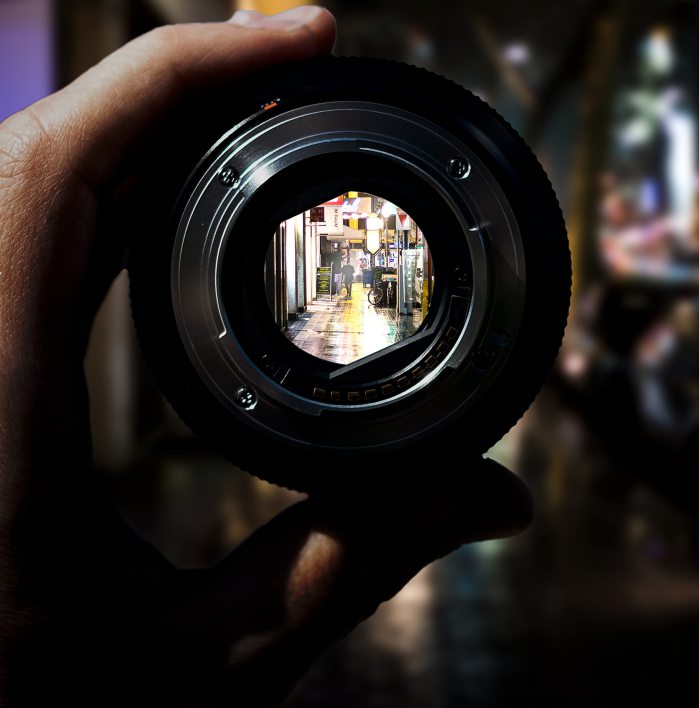
Different lenses produce different effects, allowing photographers to choose desired quality of the final image. It’s a piece of glass placed between the shutter and the film plane.
A camera lens is an essential part of your camera that determines what your photo will look like in the final print. The lens is the key part of your camera. It’s an important part that allows you to take pictures in the first place. This image can then be recorded or viewed directly via the screen.
Most of the time, a camera lens is attached to a camera body, and together they make a photographic lens. A camera lens is a transparent optical element that refracts light to form an image.
All lenses are made from transparent optical materials and may be ground and polished or molded from such materials, or made from glass (e.g., Flint glass or Crown glass) or other transparent materials.
Lenses are used in arrangements of panels that focus light toward the viewfinder or film (or sensor) inside a camera during exposure. Millions of lenses have been produced for cameras, projection televisions, and viewing devices over the past century.
Types of camera lenses
Standard Lens
Standard lenses are the first kind of camera lenses, the most common and versatile lenses. Each lens is designed to be able to shoot different kinds of photos, including portraits, landscapes, and wildlife.
A standard lens is great for everyday use and travel. Maximize the capabilities of your EOS camera with a versatile standard zoom lens that can go anywhere you do.
A standard lens is designed for everyday use, delivering an overall perspective and standard depth for your photos. Perfect for all-around print photography and snapshots of friends and family.
A standard lens is a good choice when you’re not sure what kind of shots you’ll be taking or if you’re new to photography. With a wide range of focal lengths to give you the right amount of zoom, it’s suitable for vacations, parties, concerts, and other events.
Its performance makes it perfect for any beginner. A standard lens is that which most closely resembles the human eye. “Standard” lenses have a medium focal length and a wide angle to the standard lens. You can think of these as your average, all-around lens.
A standard lens is that which most closely resembles the human eye. “Standard” lenses have a medium focal length and a wide angle to the standard lens. You can think of these as your average, all-around lens.
Telephoto Lens
Using a telephoto lens lets you get a close-up while still being able to keep your camera at a decent distance away. It also works well for taking pictures of animals. With their tightly wound coils and longer focal lengths, telephotos give a narrower angle of view than other types of lenses do.
Telephoto lens reaches far into the distance and is most widely used for wildlife photography or when an object is a long distance away. It is suited for taking pictures of animals from far away, as well as airplanes, and clouds, or for use at sporting events where athletes are a long distance away.
Telephoto lenses are excellent for taking pictures of faraway objects. When you use a telephoto lens, it is as though you are putting your camera on a telescope that allows you to zoom in on your subject from far away. A telephoto lens can be used for portrait and wildlife photography. Telephoto lenses are the best choice for taking pictures on a tripod.
When it comes to the most versatile, longest focal length lens, you can’t beat a good telephoto lens. These lenses are designed to provide a significantly magnified view of faraway objects (which is why they’re often used in wildlife and sports photography).
The telephoto lens is a long-distance photography lens. It isn’t used as often as some of the other lenses. The longer distance its pictures have from the camera makes them look distorted. The longer its available size, the more distorted its subject will be. It is usually used for taking distant events and people to appear closer.
Macro Lens
When photographing near and far subjects, the Macro Lens Super is great. The short focal length allows you to get as close as 1 foot away from your subject, plus it’s a Fixed f/3.5 lens which will give you amazing detail and clarity.
Macro lenses are used to take very close-up photographs and can let you capture the world in a whole new way! They are also a great addition to any kit as they allow you to get in close on things you may not be able to do otherwise.
A macro lens is a fixed focal length lens that allows you to get extremely close to your subject. This can be any small object, such as a flower petal, insect, or diamond ring. You may also see them marketed as ‘close-up’ lenses or ‘extreme close-up’ lenses.
Most macro lenses have a minimum focus distance of 1 foot. It’s not always necessary to buy a specialized macro lens, though they are very nice. Macro lenses are a special type of photography lens for extreme macro shots.
It can focus on objects very near to the camera—on an object 60 millimeters or less in front of the lens. This allows you to shoot details that you wouldn’t be able to see clearly with the naked eye, such as a tiny flower, insect, or fingerprint.
Provides very high image resolution and is used on compact to medium format cameras. Good for close-up photography, the macro lens magnifies the subject and can focus on objects as close as 0.8″ from the lens
Wide Angle Lens
Wide-angle lenses are used to capture a large subject. The focal length of a wide-angle lens is less than 35mm. The wide-angle lens can expand a photo horizontally, giving the photo an exaggerated sense of space or creating distortion through its curving of lines that appear toward the edges of the frame.
It can be used to make a building seem taller than it is or to make a large object like a full moon look larger in your photos. It will also create an exaggerated sense of space, so things appear farther away than they are.
If you are unsure as to whether this is something you want in your photos, then try snapping a few shots and viewing them on your camera’s LCD screen. Realize that the wider angle creates distortion, and decide for yourself if this is what you want for your landscape shots.
A wide-angle lens is a lens whose focal length is shorter than the short side of the image format. It captures a wide view, making it ideal for shooting landscapes and large groups of people.
A wide-angle lens allows you to capture more of a scene in front of you. It’s great for group shots or for taking in sweeping landscapes but can distort the proportions of a building or a person. If a scene is too big to fit into the frame, use a wide-angle lens. Wide-angle lenses are typically used to emphasize breadth in a scene. For example, fitting an entire mountain range in the frame of a picture.
Conclusion
Picking the best prime lens for Sony a7iii is very important because there are some awesome cameras in the market. Before you go out there and grab the first lens you see, you must understand what you’re searching for and how different lenses will affect your image quality.
It is going to be tough to choose your first lens for the A7iii. From cheap but competent options available at most online stores to high-end medium format lenses with Zeiss glass that produce lovely images, there are multiple factors to take into account.
Selecting the fastest lens for bokeh might not necessarily result in the best prime for portraits or landscape photography. We also hope you noticed there is no single ‘perfect’ lens.

